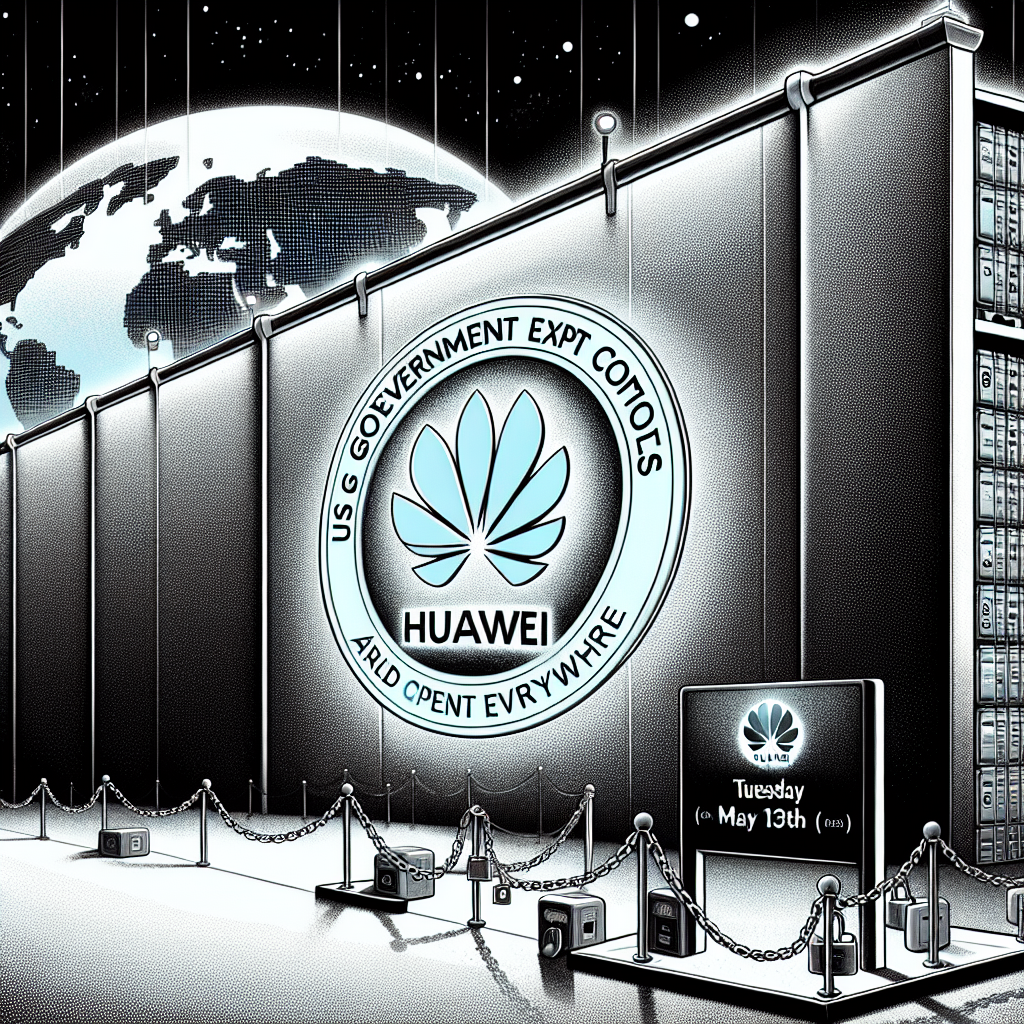On Tuesday, May 13th, the US Department of Commerce issued guidance indicating that the use of Huawei’s Ascend artificial intelligence chips anywhere in the world violates US government export controls. This warning is expected to further curb China’s chip ambitions.
The US Department of Commerce’s Bureau of Industry and Security (BIS) also stated in a press release on Tuesday that the government plans to warn the public about the potential consequences of allowing American artificial intelligence chips to be used for training and inference in Chinese artificial intelligence models.
Artificial intelligence model training involves teaching models to recognize patterns using large amounts of data, while the inference stage is when models utilize training data to perform tasks.
The guidance from the Department of Commerce will make it more difficult for Huawei to develop powerful artificial intelligence and smartphone chips. President Trump began implementing global sanctions against Huawei in his first term, leading to Huawei phones almost losing their overseas markets.
Huawei is a large technology company strongly supported by the Chinese authorities. According to the Wall Street Journal, in 2023, Huawei received $1 billion in government subsidies, four times the amount in 2019; and over the past five years, it has received nearly $3 billion in subsidies.
In 2019, Huawei released the Ascend 910 chip, manufactured by TSMC on the 7nm process node; in 2020, after the US Department of Commerce placed Huawei on the Entity List, TSMC stopped manufacturing chips for Huawei.
In 2022, Huawei released the second-generation Ascend 910B chip, manufactured by SMIC, claiming that this chip can rival Nvidia’s 2020 A100 product.
In June 2024, Huawei announced it could provide the latest processor samples for the Ascend 910C, its AI chip touted to compete with Nvidia’s H100 AI chip. Subsequently, the Center for Security and Emerging Technology at Georgetown University released a report that extensively analyzed the gap between Huawei’s Ascend 910 series chips and Nvidia’s, demonstrating the effectiveness of US chip sanctions.
The report indicated that the first-generation Ascend 910 chip manufactured by TSMC had 30-32 active AI cores, while the second-generation 910B and third-generation 910C chips manufactured by SMIC have significantly fewer active AI cores. Each 910B chip can only activate 20-25 cores, and the initially designed 50 cores for the 910C were reduced to 24 cores in later versions, indicating limitations in SMIC’s manufacturing process in terms of yield or capacity.
The report noted that the 910B is just an incremental improvement over the first-generation 910. In a rapidly evolving technological field, industry leaders have increased chip performance threefold, while the performance of the 910B is only 1.2 times that of the first-generation 910.
The report highlighted that SMIC’s yield and cost efficiency seem to be low, making it costly for Huawei, SMIC, and its government supporters. Additionally, SMIC’s 7nm production capacity remains limited, forcing Huawei to choose between manufacturing its most advanced smartphone chip (the Kirin 9000S) and AI chips.

